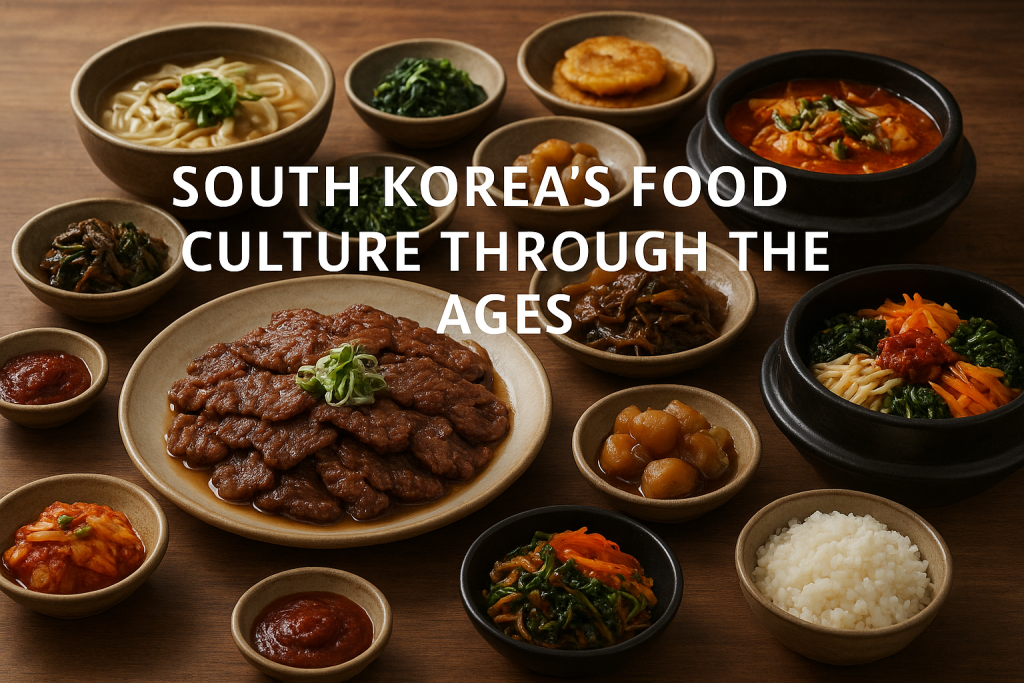The nation of South Korea has an abundance of cultural traditions and food is by far one of the strongest and most cherished traditions of the country. Korean food has a long story. The old customs have been handed over from generation to generation to the modern culinary trends. The thing is that to get the heart of South Korea, you have to taste it. In this article, you are going to learn about the Korean food tradition, from its beginning to the present and modern lives.
Contents
History of Korean Cuisine
The history of Korean food is very old and it dates back several thousand years. Earlier on, people used to rely on the land to get their food. They cultivated rice, vegetables and seasonal produce. The food was plant-based with a small portion of meat or fish. The food that farmers consumed consisted of plain rice, fermented vegetables, and broth.
The fact that there were long winters made preserving food very essential. Such was born kimchi through spiced cabbage that had been fermented and put in jars underground to be eaten throughout the cold season. Other conserved foods such as doenjang (fermented soybean paste) and gochujang (red chili paste), also existed in Korean homes.
Food was also used as a source of medicine and nutrition. Garlic, ginger and other such ingredients were also used to treat the body.
Eating Customs
When eating in Korea, it is good to be aware of some local dining manners. Your food is usually accompanied by a lot of side dishes known as banchan, that is shared. All people at the table serve and eat together, but one has to wait until the oldest person begins to eat.
Tipping is not a tradition in Korea, and water or tea are normally served with the food. One should practice pouring drinks for the other and turn his/her head aside when taking. This is very respectful, especially when taking drinks with elders or in the workplace. All these traditions demonstrate the great value Koreans place on society and relationships.
Modern Korean Food Culture
Today, the cuisine of South Korea is a combination of tradition and innovation. There are still several traditional dishes such as bibimbap, bulgogi and samgyetang (ginseng chicken soup), all eaten on a daily basis. However, fusion cuisine became popular, which means that you can now taste something that can be characterized as a combination of Korean, Western, Japanese, or Chinese styles. Korean food has gone international, but it does not lose its identity because of the main ingredients such as sesame oil, soy sauce, garlic, and chili paste.
Koreans are also fond of restaurants. Whether you prefer having street food in small stalls or elegant rooftop restaurants, everything will suit your taste. Food is not the only thing when it comes to eating out, but rather a social tool that allows people to de-stress and have fun in life.
Jeom-o: Where Tradition Meets Elegance
Jeom-o is a luxurious salon in Gangnam, Seoul and other metropolitan areas. It provides fine dining, including Korean cuisine, so it is ideal not only for business meetings but also for a calming night. You get into a calm and personal room at Jeom-O, in which the light is soothing, the music is calm, and the mood is set to be cozy.
If you’re visiting but already know where to find the best jeom-o in Seoul, you’ll discover that these exclusive venues often combine upscale entertainment with exceptional dining experiences. Many of these high-end establishments offer a refined blend of Korea’s culinary heritage and modern gastronomy. Guests can savor premium dishes such as hanwoo beef (Korea’s prized beef), Jeju-grilled abalone, or traditional kimchi prepared with gourmet ingredients, all while enjoying the discreet and sophisticated atmosphere these venues are known for.
The kitchen at Jeom-o concentrates on quality and presentation. Each meal is carefully made, perfectly presented and is to be enjoyed without rushing, making it an experience. Jeom-o venues embody the theme of Korean food culture by retaining the authentic taste of the food, but displaying it in a new, luxurious style.
Street Food and All-time Favourites
Even though Jeom-o is a luxurious experience, Korean street food is also one of the major aspects of everyday life. Food stalls selling tteokbokki (spicy rice cakes), hotteok (sweet pancakes), odeng (fish cake skewers) and gimbap (rice rolls) can be found in cities and small towns. These foods are cheap, quick and tasty.
Scores of Koreans take quick lunchtime meals at roadside food carts or late at night. Even travelers enjoy being children again with these snacks since they are fun, delicious and convenient to munch on.



